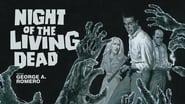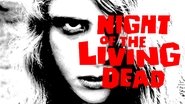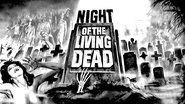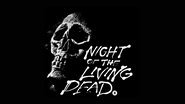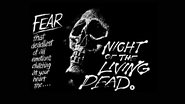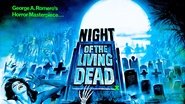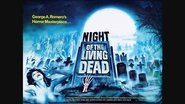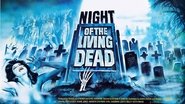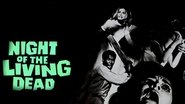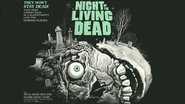Jared_Andrews
A film that popularized "zombie movies" never actually uses the word "zombies." The living dead are only referred to as "ghouls." To an audience that presumably didn't understand the concept of a zombie (since they were not very widely known at the time), it's explained quite well and in a cleverly deliberate manner. None of the characters immediately understand what is happening because why would they? Only through a series of newscasts does the situation become clear. The characters learn that the recently deceased have come back to life (thanks to some radiation effects) to kill and devour the living. This is their first encounter with what we will later call "zombies."'Night of the Living Dead' is, like many horror classics, a movie that is eventually scary. By that I mean it's not scary right away like modern horror movies. The first half is a bit slow and totally dated. It doesn't really hold up in a cinematic way, and it certainly isn't frightening. It comes across as unintentional comedy, or perhaps even intentional comedy. Either way, the material is inherently silly and benign. Around the midpoint, something genuinely horrific happens. Then the tension escalates, and the possibilities suddenly seem endless. Everyone felt somewhat safe up until that point. Sure, one character had died and it is implied that plenty of other unseen people had died off screen too, but the deaths and violence are tame. This moment opens up the floodgates. From there, a series of atrocities take place that would still be considered shocking today and were most certainly beyond shocking when audiences first saw them in 1968. These moments aren't so funny. Even though the film is 50 years old, I still won't mention spoilers, because that's the level of respect I give to these moments. They deserve to unleashed on viewers without prior notice.In addition to making a visceral fright fest, Director George Romero also tackled racial dynamics, though he admitted this was unintentional. Nevertheless, this commentary resonated with audiences in an impactful way. In the 1960s, Black characters were hardly ever presented as heroes or even as equals to their white counterparts on screen. But the lead in this film is a competent, composed Black man who takes charge when everyone else behaves hysterically in response to the "ghouls." A white man feels threatened and compelled to assume control. Though none of this is directly addressed in dialogue, one cannot help but notice the implications. It gives the film layers and makes it more than just a well-crafted zombie flick.It's an additional element like this that makes 'Living Dead' an all-time horror classic.
dougdoepke
No need to echo consensus points.
What a tribute to a bunch of non-Hollywood folks getting together to make a movie, (Romero's first). Seems like everyone in the cast already knew someone else there. The production was certainly a long way from the usual Hollywood spore, and one of the first really successful indies. Things just seem to come magically together, from casting, to great camera work, to spooky effects. My knuckles are still white from the latest viewing. I keep thinking there is some provocative subtext to the story, especially with Afro-American Jones in the lead role and playing a real hero. But I still can't find one. Instead, I think it's exactly what it appears to be: one heckuva fright film. The first and last parts are the best, concentrating on shudders the way they do. The middle part is more like human interest, random characters thrown together having to sort things out. Anyway, Romero did for Zombie films what Lugosi did for vampires. No, it's not as gory as most fright films of today. But the technique is perfect for the material, so catch how a bunch of near-amateurs manage to trump the professional Hollywood crowd.
J Besser
This movie shouldn't be as watchable as it is. You look up and you're an hour into it. Romero and company hit a homerun with their first at bat. The gross out stuff is not as gross as it used to be. In fact, it almost seems like a distraction now. Repeated viewing may have dulled the shocks for me but not the enjoyment...I'm old enough to remember when Living Dead aired on broadcast television the tv stations would put words on the screen during the news reports. They wanted the audience to understand it was not a real newscast and that it was just a movie.
gorf
Casting a black man as the main character in a horror film during the 60s was a bold move. Too bad he had to star in Night of the Living Dead.Night of the Living Dead has some genuinely suspenseful parts, especially at the beginning, when Barbara is attacked by a zombie. The fact that we don't really know why the dead are rising from their graves is also frightening. Unfortunately, Romero decided to add unnecessary scenes of cannibalism, and a zombiefied child who stabs her own mother to death. We already know from the radio announcer that the zombies eat their victims, and the thought of it is disturbing enough, we don't have to see them play with intestines or sink their teeth into livers.Night of the Living Dead took a giant step forward by having a black lead character, but two giant steps backward with the unnecessary guts and gore. Suddenly, horror movies started to focus more on violent and disgusting scenes than meaningful stories. In a way, movies like NOTLD ruined the horror genre. It doesn't help that the movie becomes insanely boring after a short while. And the ending is just depressing, it makes the entire movie pointless.The only way I could recommend NOTLD is as a sleeping aid.








